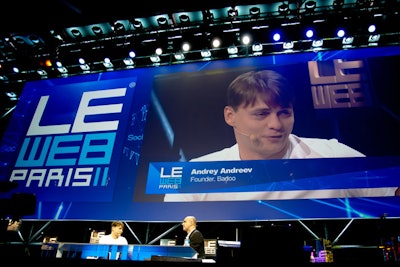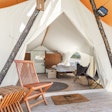
With new technology like apps, social media, and the ability to live stream content changing live events, marketers and planners are constantly looking for new ideas on how to best utilize what's available. So it was no surprise that among the hopeful start-up founders, brand representatives, and bloggers at the 2013 South by Southwest Interactive festival—the conference on emerging technology—event professionals also formed an outsize presence.
During the "Event Success Through New Tools and Technologies" panel at SXSWi, Brian Duggan, who, as founder of Building Alliances, has helped execute events for Fast Company, Federated Media, and Twitter; and Loic Le Meur, founder of semiannual European tech event LeWeb, which brings together brands and investors, offered tips on how planners can get the most out of new technologies.
1. Try tweet-size events
"I believe the role of technology is a huge challenge and a huge opportunity," said Duggan. "It's a calling to up our game. With everything that's out there, we need to create a whole new level of value in order to get people to your events and get them to stay."
In some instances, Duggan believes, this means rethinking the traditional structure of events. "The panel discussion and trade show models have become less effective," said Duggan. "We need to find ways to break them up and make them more engaging. The challenge is to keep people's attention."
At Federated Media's Conversational Marketing Summit, said Duggan, "We have taken to scheduling 5- to 10-minute sessions instead of hour-long panels. By keeping sessions short and really engaging, we find people can get more out of them. Then we drive people to SlideShare or other online resources—that's where the Web technology comes into play."
Similarly, Le Meur finds that small, tech-forward ways to engage attendees at various moments throughout the event can be more effective than stopping for one large, attention-grabbing spectacle. For example, Le Meur helped plan a recent Doritos branded event, where, instead of a live raffle or giveaway, guests were handed R.F.I.D. bracelets that they could scan at various places to win prizes throughout the evening. To get a bracelet at the start of the event, each guest had to consume a bag of Doritos.
2. Content sharing is the new marketing
Event planners have struggled with the questions of what content should be posted online and what should be kept exclusive for in-person attendees. But Le Meur believes the trade-off inherent in giving away content for free is more than worth it in the returns—he says building online visibility for his brand has driven more attendees to LeWeb events, not less.
"We put everything on YouTube," said Le Meur. "I always have people telling me, 'You're hurting yourself, because people can just stay home [and still have access to the content].' But here is an opportunity to get your brand not only at the event, but in front of many, many more people. In every Web video we publish you'll see the LeWeb logo featured prominently. We've had two million views, all of them with our logo in them. That's my marketing budget right there. I don't spend any money on marketing—just on content sharing."
3. A thousand photos are worth more than words
While planners may be tempted to control their messaging by allowing professional photos only, Le Meur and Duggan spoke of the promotional benefit of getting as many photos—and as many different types of photos—out there as possible.
"We have two things at every event," said Le Meur. "Professional photographers who we pay and they try to position the brand in their photos as much as possible, and individual photographers who we get press passes for and then let do whatever they want."
By encouraging both pro shots and amateur photos, the brand is well positioned to appear in as many outlets as possible, whether editors want professional shots or custom ones.
Additionally, "We put everything on Facebook and Flickr and we make it all Creative Commons," said Le Meur, who discredits the idea of fully copyrighting event photos for future use. "It's an investment. When someone Googles for a person they may find our photo from three years earlier, and they'll see our logo."
4. Control the narrative
The growth of social media use at live events—and the tendency to encourage as much sharing as possible—has made it more important than ever for planners to think before, during, and after the event about how to guide the story of what their event is about.
"We always do a wrap-up video for every event," said Le Meur. "It costs $5,000, and it's a great investment, because it allows you to show what the narrative of your event is."
Duggan suggested looking into Storify, a platform that allows users to pull tweets, Facebook posts, YouTube videos, Instagram photos, and other Web-based links into a custom timeline. "One tool I think has yet to find its full legs is Storify," said Duggan. "It provides a really nice way for you to tie the story together."
However, as many look for ways to extend the value of one-day or one-week events year-round, Le Meur encourages planners to value the importance of an event that is very strong at one specific time but doesn’t jostle for attention 24 hours a day, seven days a week, 365 days a year.
"I've seen events like the World Economic Forum invest a huge amount of money into attempts to connect people in between their annual events. … It doesn't happen," Le Meur said. "Same thing at South by Southwest. We come here once a year; then we don't connect about it until next year. I think it's natural."
With so much going on throughout the year, it can be helpful to remember that events don't always have to be perma-present, added value extravaganzas, but that sometimes they work better as just, well, events.



















